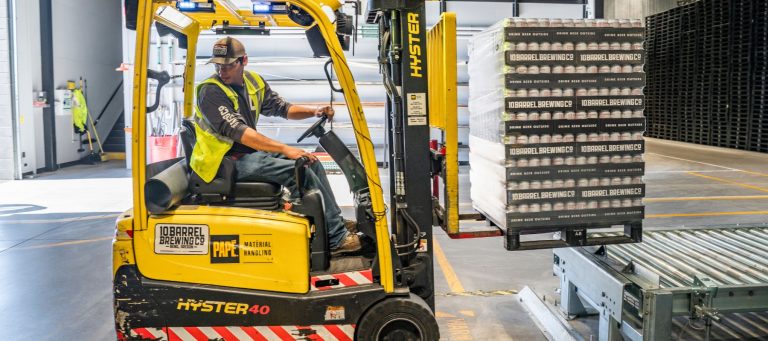Recent articles and research have drawn attention to the potentially significant issue of the ‘Great Resignation’ and related burnout, and how conditions such as burnout are now starting to impact people, families, and business owners worldwide.
The term ‘Great Resignation’ was first coined by Anthony Klotz, an organisational psychologist and professor at Texas A&M University. Klotz used the term to describe the wave of people quitting their jobs due to the ongoing COVID-19 pandemic, which led many to re-think where, how and why we work (2022:CNBC.com).
Whilst Klotz was referring to the trend in the United States, PricewaterhouseCoopers (PwC) also explored the potential of a Great Resignation in Australia and found that:
- Six in 10 people who have left an organisation in the past year are looking to leave their current employer in the next 12 months
- Australian employees rank pay and wellbeing as the top drivers attracting them to work for organisations
- Almost half of Australian employers have no intention of updating their employee value proposition to attract talent
- 85% of workers experienced mental health challenges during the pandemic and more than one-third consider their employer the main source of mental health support
- A quarter of workers said the reasons they join an organisation and the reasons they stay are not always the same
The Australian Broadcasting Corporation (ABC) also wrote about the issue of the ‘Great Resignation’ in September 2021, highlighting the true numbers will only be realised once the pandemic has passed. The article (here) asks its readers:
“Has the pandemic made you rethink your career or deeply question the role of work in your life? If so, you’re not alone.”
What does burnout mean for safety professionals?
Many safety professionals who are experiencing deep career fatigue are leaving behind a profession they are passionate about. Reasons include increasing expectations and pressures on their role, and the looming threat of direct legal accountability.
Employees across all levels of a business can experience burnout, from the shop floor to the C-Suite. It is a condition that can diminish every aspect of working life. Forbes Magazine explains:
“Left unchecked, burnout can wreak havoc on your health, happiness, relationships, and job performance.”
And as we know, you can’t have a workplace injury and not take it home.
US-based safety professional, Rosa Carrillo, has explored and written of the impact of burnout on safety professionals (here), and the fallout of a Great Resignation. Reading her posts, you can’t help but consider the following:
- What is burnout and how does it compare to wellbeing?
- Why is it happening?
- Is it just Covid-19?
What is burnout and how does it compare to wellbeing?
Burnout is defined by the World Health Organisation (WHO) as:
A syndrome conceptualised as resulting from chronic workplace stress that has not been successfully managed. It is characterised by three dimensions:
- Feelings of energy depletion or exhaustion;
- Increased mental distance from one’s job, or feelings of negativism or cynicism related to one’s job; and
- Reduced professional efficacy.
Burn-out refers specifically to phenomena in the occupational context and should not be applied to describe experiences in other areas of life.
On the flip side, wellbeing in the workplace is defined by the International Labour Organisation as:
“Workplace Wellbeing relates to all aspects of working life, from the quality and safety of the physical environment, to how workers feel about their work, their working environment, the climate at work and work organization. The aim of measures for workplace well-being is to complement OSH measures to make sure workers are safe, healthy, satisfied and engaged at work.”
The impact and effects of workplace burnout and workplace wellbeing are not mutually exclusive.
Why is it happening? Is it just COVID-19?
At this stage of the pandemic, we are coming to the realisation that we have allowed our work and working lives to occupy too much of our sense of self. A tipping point was inevitable, which for many, has been life experiences during the pandemic.
To move forward we must consider the key indicators of workplace burnout and how to recognise burnout in yourself and in others (especially as an employer with people under your care).
In this 2013 Forbes Magazine article the top three indicators for burnout were:
- Exhaustion: A clear sign of burnout is when you feel tired all the time. Exhaustion can be emotional, mental or physical. It is the sense of not having any energy, of being completely spent.
- Lack of motivation: When you don’t feel enthusiastic about anything anymore or you no longer have that internal motivation for your work, there’s a good chance you’re experiencing burnout. Other ways this manifests? It may be harder to get going in the morning and more difficult to drag yourself into work every day.
- Frustration, cynicism and other negative emotions: You may feel like what you’re doing doesn’t matter that much anymore, or you may be disillusioned with everything. You might notice that you feel more generally pessimistic than you used to. While everybody experiences some negative emotions from time to time, it’s important to know when these are becoming unusual for you.[1]
What to do if you recognise burnout
If you recognise any of these signs in yourself, or those around you, there are a few key things you can do. Step back, take a deep breath, take some personal quality time, and ask serious questions about the role work is playing in your life.
As a leader, or a business owner, step forward and have an open genuine conversation across your business, and, crucially, when you see someone on the edge of burnout. It may be an uncomfortable conversation and it may mean reassessing how you plan work and processes. In many ways this is a powerful step towards creating a psychosocially safe workplace. It can also create the opportunity for you to develop the positive steps to take to help move others from burnout to thriving.
A major step will be understanding that changes must be made. You may need to ask yourself if that work process you designed five years ago is still fit for 2022? You might also need to consider:
- Is the office layout a good working space?
- Do we need more flexible working options?
- Why is that scaffold designed that way?
- Is that workbench at the correct height?
- Have we communicated clearly?
As individuals we sometimes must take equally difficult steps, whether in reassessing our expectations of ourselves and others or simply saying ‘no’ to taking on more work. It may be admitting that it is time to change jobs to move away from people you like working with (which makes you over-commit, which makes you tired and fatigued, which impacts on other aspects of your life). Or simply it is making the difficult choice to move on from a toxic and political workplace that pays well.
Unfortunately, there is no easy silver bullet quick fix that will ease the discomfort. It is understanding the steps you need to take to get to the very core of the issue and take positive steps that will get results.
We are here to help
As a multi-disciplined occupational health and safety consultancy, Action OHS Consulting has an expert team of specialists with a broad range of workplace expertise. As a person-centred and business-focused organisation, we can help you assess any issue, and develop your knowledge to better understand and to support you resolve some of the issues mentioned. Issues that may be contributing to all aspects of your workplace and your business and that impact the physical and psychosocial health and safety of you and your people.
You can reach out to us here.
[1] 10 Signs You’re Burning Out – And What To Do About It (forbes.com)






